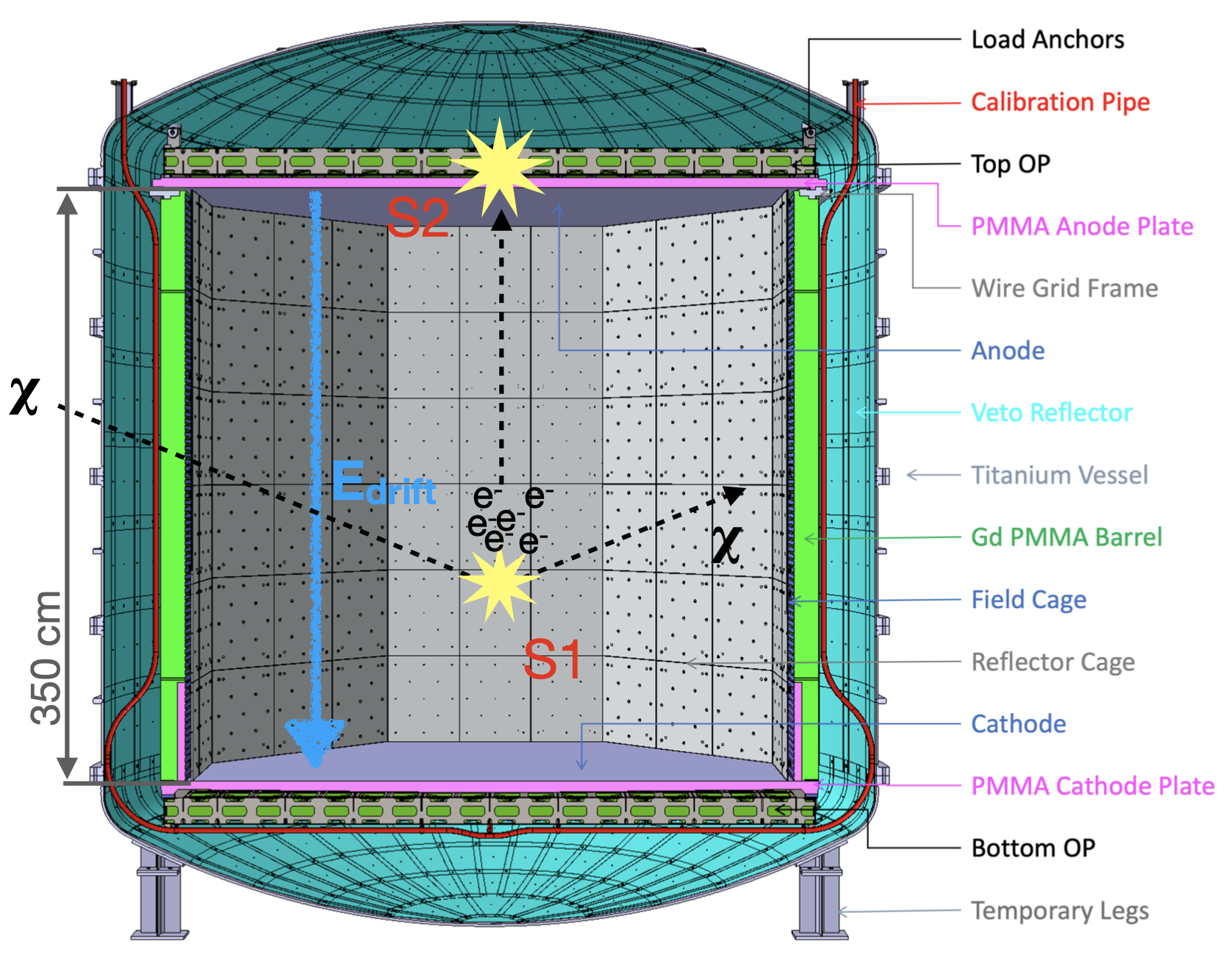DarkSide
The Darkside-20k detector is currently under construction at Gran Sasso Laboratory in Italy. It hopes to detect the rare interactions of WIMP dark matter using a dual-phase time projection chamber (TPC) containing 51 t of liquid argon (LAr) which acts as the detection target. LAr is a very good scintillator and can be easily ionised, meaning that the energy deposited by interactions of dark matter and other particles will cause the emission of photons and electrons. Darkside-20k will detect these photons with two arrays of silicon photomultipliers (SiPMs), positioned at the top and bottom of the TPC. The electrons are drifted to the top of the detector by an electric field, where they emit an additional photon signal in the gas after leaving the liquid surface. This secondary signal is also detected by the SiPMs and its size relative to the initial signal can provide information about the type of interaction that occurred. This identification of interactions is vitally important as it allows the rare dark matter signals to be distinguished from the majority of background interactions. Argon has an advantage over similar detection target materials, such as xenon, in this respect as there is also a significant difference in the shapes of the light pulses produced by different types of particles.

One background that cannot be removed using these methods is that of neutrons. Neutrons interact with the LAr in the same way as WIMPs and the resulting signals are therefore indistinguishable. However, neutrons interact much more often than dark matter particles and it is therefore quite likely that a neutron passing through the detector will interact more than once, producing multiple signals. As the chances of a WIMP interacting multiple times in the detector are practically zero, this can be used as a way of distinguishing neutrons from WIMPs. In order to further increase the likelihood of neutrons interacting multiple times, a dedicated neutron veto is employed. This surrounds the TPC and uses gadolinium loaded acrylic as a neutron capture target and LAr as a scintillation medium. Signals in this veto detector are detected by a set of SiPMs mounted on the acrylic.
At Edinburgh, we are setting up a test stand for carrying out quality assurance measurements of the SiPMs produced in the UK for use in the Darkside-20k neutron veto. This consists of a liquid nitrogen dewar which can house 5 photon detection units (20 cm x 20 cm arrays of SiPMs) on a pentagonal frame with a light diffuser at the centre. Data will be recorded while pulses of light illuminate the SiPMs in order to test and characterise these detectors.

